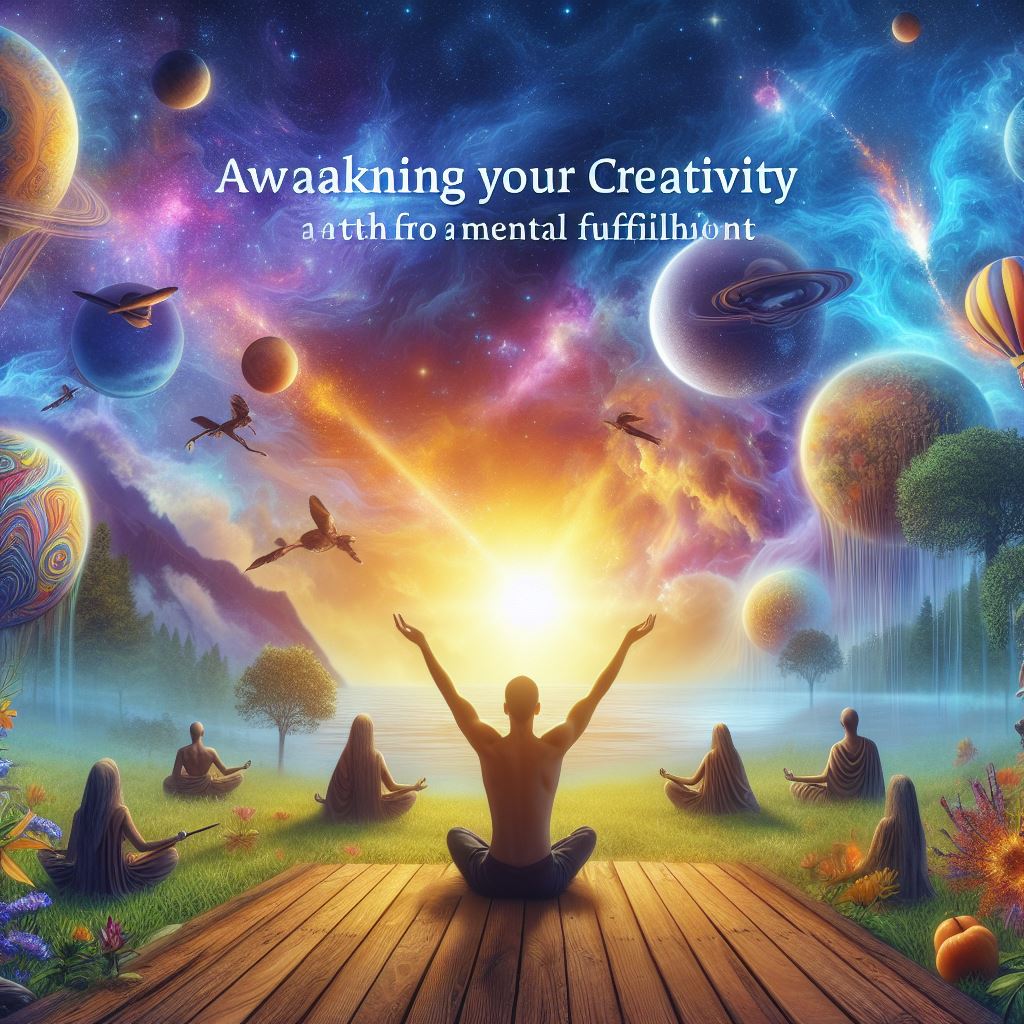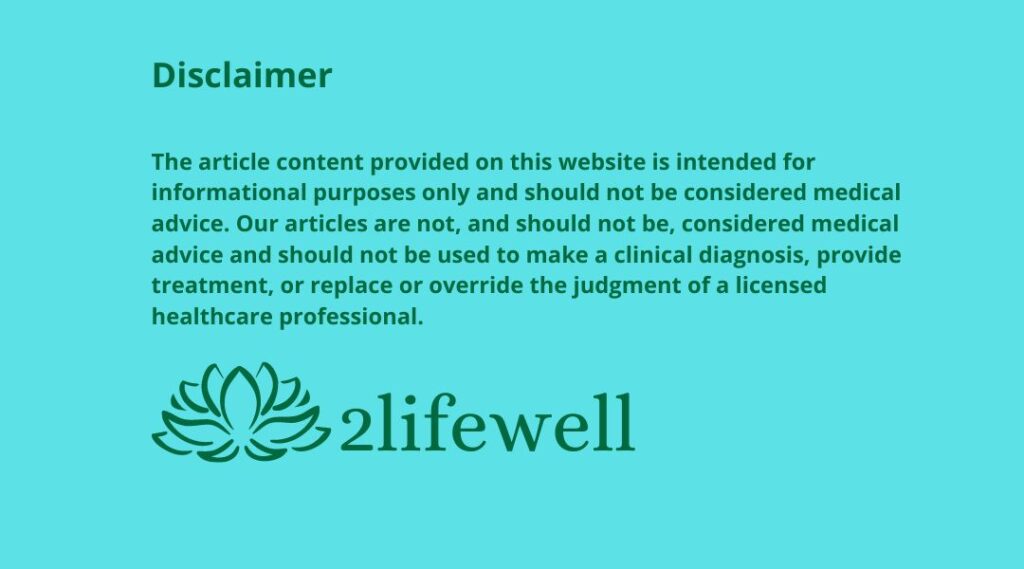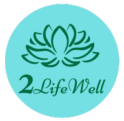
Unlocking the Power of Creativity
Creativity is a fundamental aspect of the human experience, encompassing the ability to generate novel ideas, solutions, and expressions. It serves as a gateway to self-expression, innovation, and personal fulfillment. Whether you’re an artist, a scientist, an entrepreneur, or simply someone navigating the complexities of everyday life, cultivating creativity can lead to profound benefits for your mental well-being and overall satisfaction.
In this article, we’ll explore the multifaceted nature of creativity and its transformative potential in fostering mental fulfillment. From understanding the psychology behind creative thinking to practical strategies for nurturing your creative spark, we’ll delve into the rich tapestry of creativity and its role in shaping a more vibrant and enriching life.
Understanding Creativity: Exploring Its Definition and Importance
Creativity is often defined as the ability to generate new ideas, insights, or solutions that are both original and valuable. It encompasses a wide range of activities, from artistic expression and scientific discovery to problem-solving and innovation in everyday life. At its core, creativity involves breaking free from conventional thinking patterns and exploring new possibilities.
Tip: Embrace curiosity and open-mindedness as catalysts for creativity. Stay receptive to new ideas and experiences, and don’t be afraid to challenge existing norms and assumptions.
The Psychology of Creativity: How Our Minds Generate New Ideas
The creative process is a complex interplay of cognitive processes, emotions, and environmental factors. Research in psychology has shed light on the mechanisms underlying creative thinking, revealing that it often involves a combination of divergent thinking (generating multiple solutions) and convergent thinking (evaluating and selecting the best ideas).
Tip: Foster a growth mindset by reframing failures and setbacks as opportunities for learning and growth. Embrace experimentation and iteration as essential components of the creative journey.
Breaking Through Creative Blocks: Strategies for Overcoming Challenges
Creativity is not always a smooth and linear process. At times, we may encounter obstacles or barriers that impede our creative flow. These creative blocks can stem from fear of failure, perfectionism, self-doubt, or external pressures. However, by adopting strategies to overcome these challenges, we can reignite our creative spark and keep our creative momentum flowing.
Tip: Take breaks and allow yourself to step away from your work when feeling stuck. Engage in activities that replenish your energy and inspire new ideas, such as going for a walk, practicing mindfulness, or engaging in a hobby.
Cultivating Creativity: Practices to Unlock Your Creative Potential
Creativity is a skill that can be cultivated and nurtured through deliberate practice and intentional effort. By incorporating specific techniques and habits into your daily routine, you can enhance your creative abilities and tap into your full creative potential.
Tip: Set aside dedicated time for creative pursuits and establish a consistent creative routine. Experiment with different brainstorming techniques, such as mind mapping, free writing, or visualizing your ideas. Surround yourself with sources of inspiration, whether it’s nature, art, music, literature, or conversation.
Embracing Imperfection: The Role of Failure in the Creative Process
Failure is an inevitable part of the creative journey, yet it is often feared and avoided. However, failure serves as a valuable teacher, offering insights and lessons that propel us forward on our creative path. By embracing imperfection and reframing failure as a natural and necessary aspect of growth, we can cultivate resilience and courage in our creative endeavors.
Tip: Embrace the concept of “failing forward” by viewing setbacks as stepping stones to success. Celebrate your mistakes as opportunities for learning and growth, and don’t let fear of failure hold you back from exploring new ideas and taking creative risks.
Finding Inspiration: Nurturing Your Creative Spark
Inspiration can strike at unexpected moments, igniting our creative spark and fueling our imagination. However, it’s also something we can actively cultivate by immersing ourselves in environments and experiences that stimulate our creativity. Whether it’s through exposure to art, nature, culture, or diverse perspectives, finding inspiration is essential for nurturing our creative spirit.
Tip: Seek out experiences that energize and inspire you, whether it’s visiting museums, attending workshops, or exploring new places. Keep a journal or digital archive of ideas, images, and quotes that resonate with you, and revisit them whenever you need a creative boost.
Creative Rituals: Establishing Habits to Fuel Your Imagination
Creative rituals are intentional practices or routines that help us tap into our creative flow and enhance our productivity. These rituals can vary widely depending on individual preferences and creative pursuits, but they often involve creating a conducive environment, setting specific goals or intentions, and engaging in activities that stimulate creativity.
Tip: Designate a sacred space or “creative corner” where you can retreat to focus on your creative work without distractions. Establish a daily or weekly ritual that signals to your brain that it’s time to enter a creative mindset, whether it’s lighting a candle, playing inspiring music, or practicing a brief mindfulness meditation.
The Connection Between Creativity and Mental Well-being
Creativity and mental well-being are deeply intertwined, with research suggesting that engaging in creative activities can have profound benefits for our psychological health and emotional resilience. Whether it’s through artistic expression, problem-solving, or imaginative play, creativity offers a powerful outlet for self-expression, stress relief, and personal growth.
Tip: Prioritize creative self-care practices that nurture your mental well-being, such as journaling, drawing, gardening, or engaging in DIY projects. Make time for activities that bring you joy and fulfillment, and notice how they positively impact your mood and overall outlook on life.
Creativity in Everyday Life: Infusing Your Daily Routine with Innovation
Creativity is not limited to artistic endeavors or special occasions; it can infuse every aspect of our daily lives. From problem-solving at work to finding new ways to express ourselves in our personal relationships, incorporating creativity into our daily routines can lead to greater fulfillment and satisfaction.
Tip: Look for opportunities to inject creativity into your daily tasks and responsibilities. Experiment with new approaches, challenge assumptions, and seek out alternative perspectives. Embrace the mindset of a “creative problem solver” and approach challenges with curiosity and resourcefulness.
Creativity in Problem-Solving: Approaching Challenges with a Creative Mindset
Creativity is a valuable asset in problem-solving, enabling us to think outside the box and devise innovative solutions to complex problems. By cultivating a creative mindset and employing techniques such as brainstorming, lateral thinking, and reframing, we can overcome obstacles and achieve breakthroughs in both personal and professional domains.
Tip: Practice divergent thinking by generating multiple potential solutions to a problem, even if they seem unconventional or impractical at first. Encourage collaboration and diverse perspectives by seeking input from others and embracing constructive feedback. Remember that there’s often more than one “right” answer, and be open to exploring alternative approaches.
Expressing Creativity: Exploring Different Forms of Artistic Expression
Creativity manifests in a myriad of forms, from visual arts and music to writing, dance, and beyond. Each medium offers a unique opportunity for self-expression and exploration, allowing us to communicate our thoughts, emotions, and experiences in creative and meaningful ways.
Tip: Experiment with different creative mediums and techniques to discover what resonates with you. Whether it’s painting, photography, poetry, or pottery, find a form of artistic expression that speaks to your soul and allows you to authentically express yourself. Don’t worry about achieving perfection; focus on the process of creation and the joy it brings you.
Collaborative Creativity: Harnessing the Power of Group Dynamics
Creativity thrives in collaborative environments where diverse perspectives, skills, and experiences intersect. By fostering a culture of collaboration and teamwork, we can leverage the collective intelligence and creativity of a group to generate innovative ideas and solutions.
Tip: Cultivate a supportive and inclusive environment where all voices are heard and valued. Encourage brainstorming sessions, team projects, and cross-disciplinary collaborations to spark creativity and foster synergy. Practice active listening, empathy, and respect for differing viewpoints, and celebrate the unique contributions of each team member.
Overcoming Creative Blocks: Strategies for Rekindling Inspiration
Creative blocks are a common challenge faced by artists, writers, and creators of all kinds. When inspiration seems elusive and ideas refuse to flow, it can be frustrating and disheartening. However, there are strategies we can employ to break through creative blocks and reignite our creative spark.
Tip: Take a break and engage in activities that help you relax and recharge, such as going for a walk, practicing mindfulness, or immersing yourself in nature. Explore different sources of inspiration, whether it’s visiting an art gallery, listening to music, or reading a book. Experiment with creative exercises and prompts to stimulate your imagination and jumpstart your creativity.
Cultivating Creative Confidence: Nurturing Belief in Your Abilities
Creative confidence is the belief in one’s ability to generate ideas, solve problems, and express oneself creatively. It is essential for overcoming self-doubt and fear of failure, allowing us to embrace our unique voice and creative vision with courage and conviction.
Tip: Cultivate a growth mindset by reframing setbacks as opportunities for learning and growth. Practice self-compassion and embrace imperfection as a natural part of the creative process. Surround yourself with supportive mentors, peers, and role models who inspire and encourage you to pursue your creative passions. Celebrate your achievements and milestones, no matter how small, and acknowledge the progress you’ve made on your creative journey.
Sustaining Creativity: Strategies for Long-Term Inspiration and Productivity
Sustaining creativity over the long term requires intentional effort and commitment. It involves establishing healthy habits, managing time and energy effectively, and nurturing a conducive environment for creative work to thrive.
Tip: Establish a regular creative practice by setting aside dedicated time for creative pursuits each day or week. Create a nurturing environment that inspires and energizes you, whether it’s a dedicated workspace, a cozy corner with natural light, or a digital toolkit of creative resources. Practice self-care and prioritize activities that replenish your energy and creativity, such as exercise, rest, and social connection. Stay curious and open-minded, and continue to seek out new experiences and challenges that fuel your creative passion.
The Ripple Effect of Creativity: Impacting Others and Making a Difference
Creativity has the power to inspire, educate, and uplift others, creating a ripple effect that extends far beyond the individual creator. Whether through art, storytelling, innovation, or advocacy, creative endeavors have the potential to spark change, foster connection, and enrich the lives of those around us.
Tip: Share your creative work with others and invite feedback and collaboration. Use your creative talents to address social issues, advocate for causes you believe in, or contribute to positive change in your community. Remember that creativity is a gift meant to be shared, and the impact of your creative contributions can be profound and far-reaching.
Integrating Creativity into Daily Life: Practical Tips and Strategies
Integrating creativity into our daily lives requires intentionality and commitment. By incorporating small, creative practices and habits into our routines, we can infuse our days with inspiration, joy, and fulfillment.
Tip: Look for opportunities to infuse creativity into everyday tasks and activities, whether it’s cooking a new recipe, rearranging furniture, or doodling in a notebook. Practice mindfulness and stay present in the moment, allowing yourself to fully engage with the creative process. Keep a creativity journal to capture ideas, observations, and inspirations throughout the day, and revisit them whenever you need a creative boost.
Overcoming Resistance and Procrastination: Strategies for Taking Action

Resistance and procrastination are common barriers to creativity, often fueled by fear, self-doubt, and perfectionism. Overcoming these obstacles requires self-awareness, compassion, and a willingness to take imperfect action.
Tip: Identify the underlying causes of resistance and procrastination, whether it’s fear of failure, perfectionism, or overwhelm. Break tasks down into smaller, manageable steps and set realistic goals to avoid feeling overwhelmed. Practice self-compassion and adopt a growth mindset, acknowledging that mistakes and setbacks are natural parts of the creative process. Cultivate accountability and support by sharing your goals and progress with a trusted friend, mentor, or creative partner.
The Role of Feedback and Critique in the Creative Process
Feedback and critique are essential components of the creative process, providing valuable insights and perspectives that help us refine our work and grow as artists and creators. Learning to give and receive feedback constructively is a skill that can enhance our creative practice and foster collaboration and growth.
Tip: Seek out feedback from trusted mentors, peers, or collaborators who can offer constructive criticism and support. Be open-minded and receptive to feedback, recognizing that it is an opportunity for learning and improvement. Practice giving feedback thoughtfully and respectfully, focusing on specific observations and suggestions for improvement rather than subjective opinions or judgments. Remember that feedback is meant to help you grow and evolve as a creative, not to tear you down or diminish your worth.
Celebrating Your Creative Journey: Reflections and Gratitude
As you reflect on your creative journey, take a moment to celebrate how far you’ve come and all that you’ve accomplished. Express gratitude for the people, experiences, and opportunities that have supported and inspired you along the way, and honor the creative spark that burns brightly within you.Tip: Take time to acknowledge and celebrate your creative achievements, no matter how big or small. Create a ritual or ceremony to mark significant milestones and accomplishments, whether it’s completing a project, receiving recognition for your work, or overcoming a creative challenge. Express gratitude for the resources, support, and opportunities that have contributed to your creative journey, and pay it forward by supporting and uplifting fellow creators in turn.
Books:
- “The Artist’s Way: A Spiritual Path to Higher Creativity” – Julia Cameron – https://amzn.to/4gcQ1me
- Cameron offers a twelve-week program to unlock creativity and find a deeper sense of fulfillment and mental fulfillment.
- “Big Magic: Creative Living Beyond Fear” – Elizabeth Gilbert – https://amzn.to/3Zgcb13
- Gilbert explores how cultivating a creative and courageous life can lead to a sense of fulfillment and meaning in all areas of life.
- “Creative Confidence: Unleashing the Creative Potential Within Us All” – Tom Kelley and David Kelley- https://amzn.to/3TppAA3
- The Kelley brothers share strategies for developing creative confidence and unlocking innate creative potential, promoting mental fulfillment and personal fulfillment.
- “Steal Like an Artist: 10 Things Nobody Told You About Being Creative” – Austin Kleon – https://amzn.to/47miKku
- Kleon offers practical insights on how to find inspiration, cultivate creativity, and promote mental fulfillment through artistic expression.
- “Creative Visualization: Use the Power of Your Imagination to Create What You Want in Your Life” – Shakti Gawain – https://amzn.to/3Xp0jai
- Gawain explores how creative visualization can be a powerful tool for awakening creativity and achieving mental fulfillment.
Scientific articles:
- “The Neural Basis of Human Creativity” – Dietrich & Kanso (2010)
- This article reviews the neural bases of human creativity, offering insights into how to promote creative expression to achieve mental fulfillment.
- “Creativity in the Wild: Improving Creative Reasoning through Immersion in Natural Settings” – Atchley et al. (2012)
- Research into how immersion in natural environments can improve creativity and promote mental fulfillment.
- “Creativity and Mental Health: A Profile of Writers and Musicians” – Ludwig (1995)
- This study examines the relationship between creativity and mental health, highlighting how creative expression can contribute to emotional well-being and mental fulfillment.
- “The Connection Between Art, Healing, and Public Health: A Review of Current Literature” – Stuckey & Nobel (2010)
- Review that explores the benefits of artistic expression in promoting mental health and fulfillment, offering insights into how creativity can be a form of self-transformation.
- “Creativity and Well-Being: A Five-Year Longitudinal Study” – Conner et al. (2016)
- This study investigates the relationship between creativity and well-being over time, showing how creative expression can contribute to a fuller and more satisfying life.
Book Chapters:
- “Handbook of Creativity” – Chapter on creativity and emotional well-being by James C. Kaufman (2010) – https://amzn.to/3XCtnfK
- Offers a comprehensive view of how creativity can promote emotional well-being and mental fulfillment in many areas of life.
- “The Cambridge Handbook of Creativity” – Chapter on creativity and mental health by Jordan B. Peterson (2010) – https://amzn.to/4ej5TlC
- Explores the relationship between creativity and mental health, offering insights into how to cultivate a more creative and fulfilled life.

